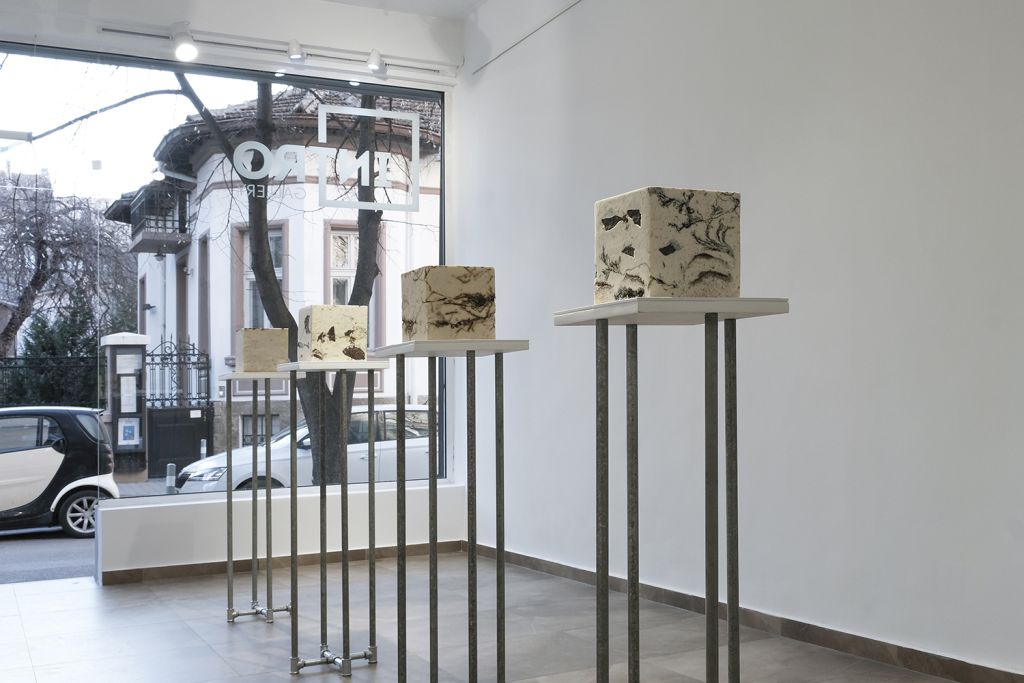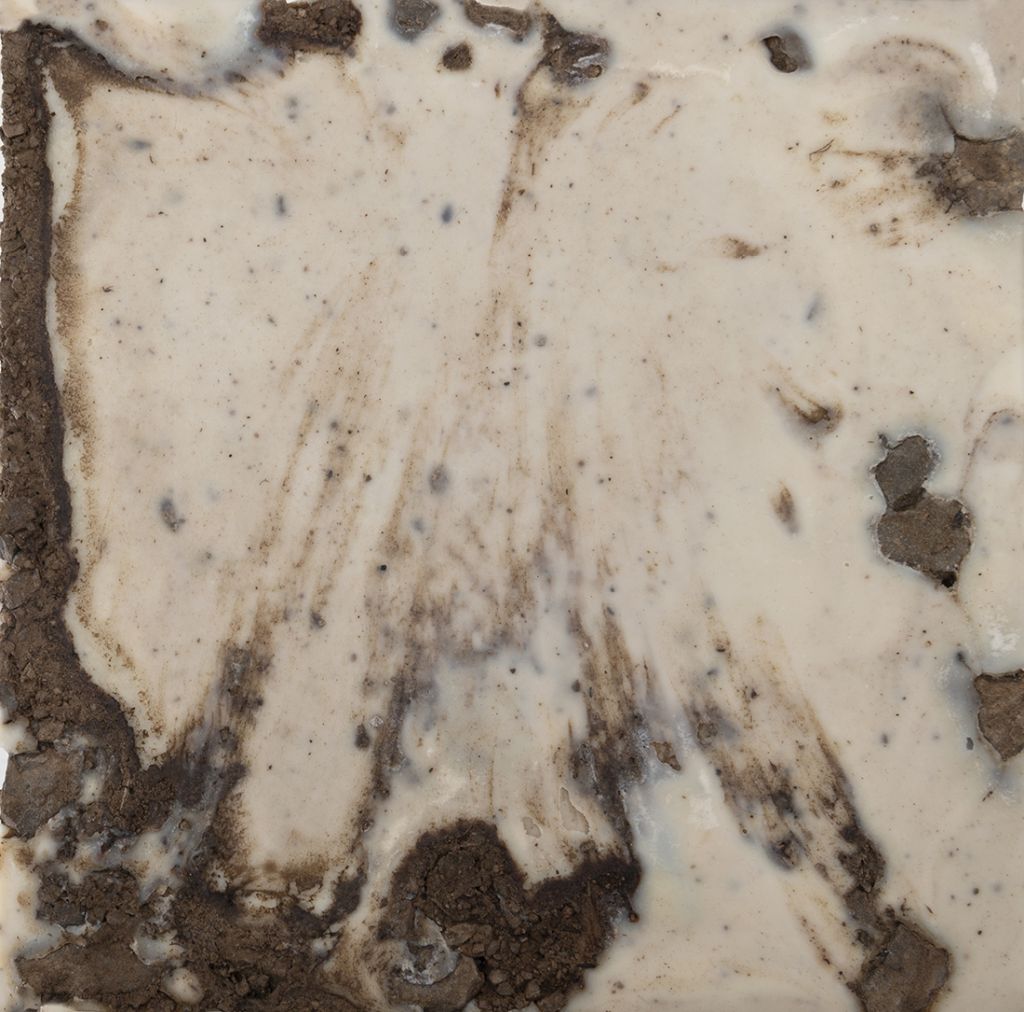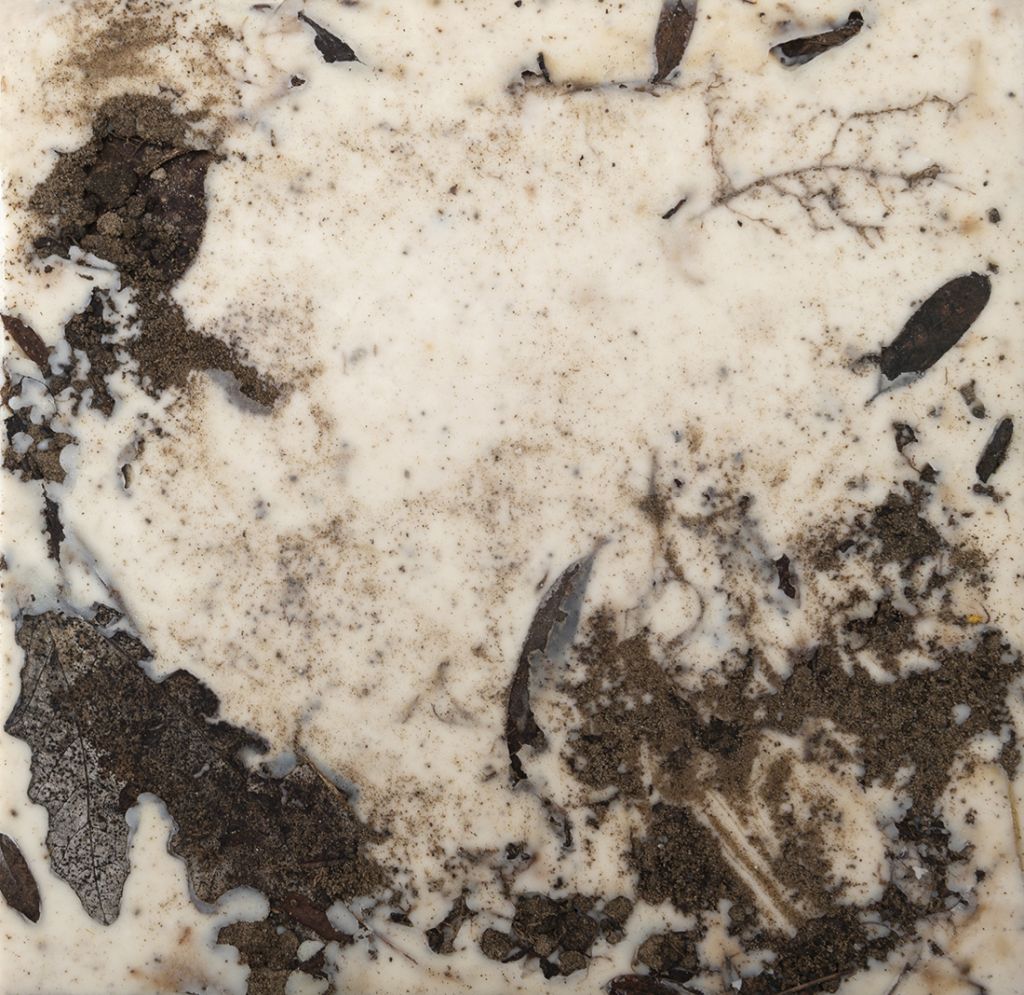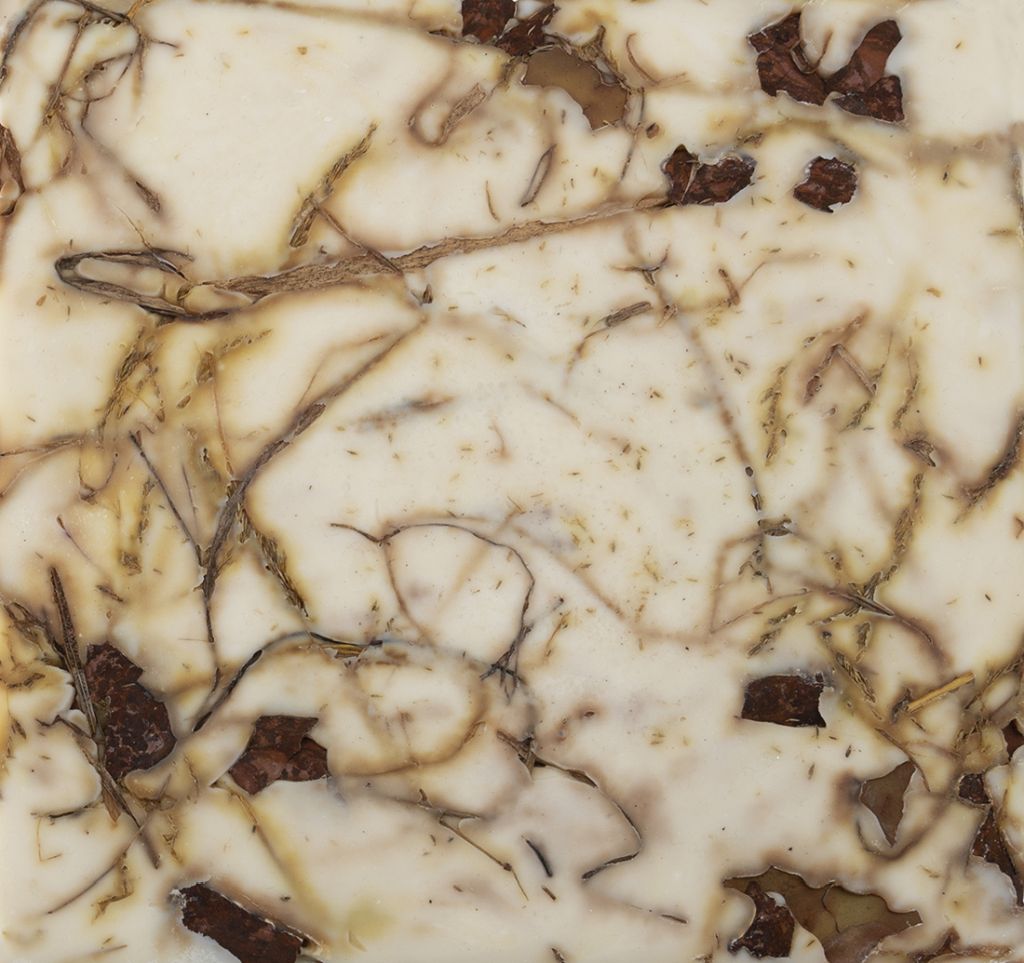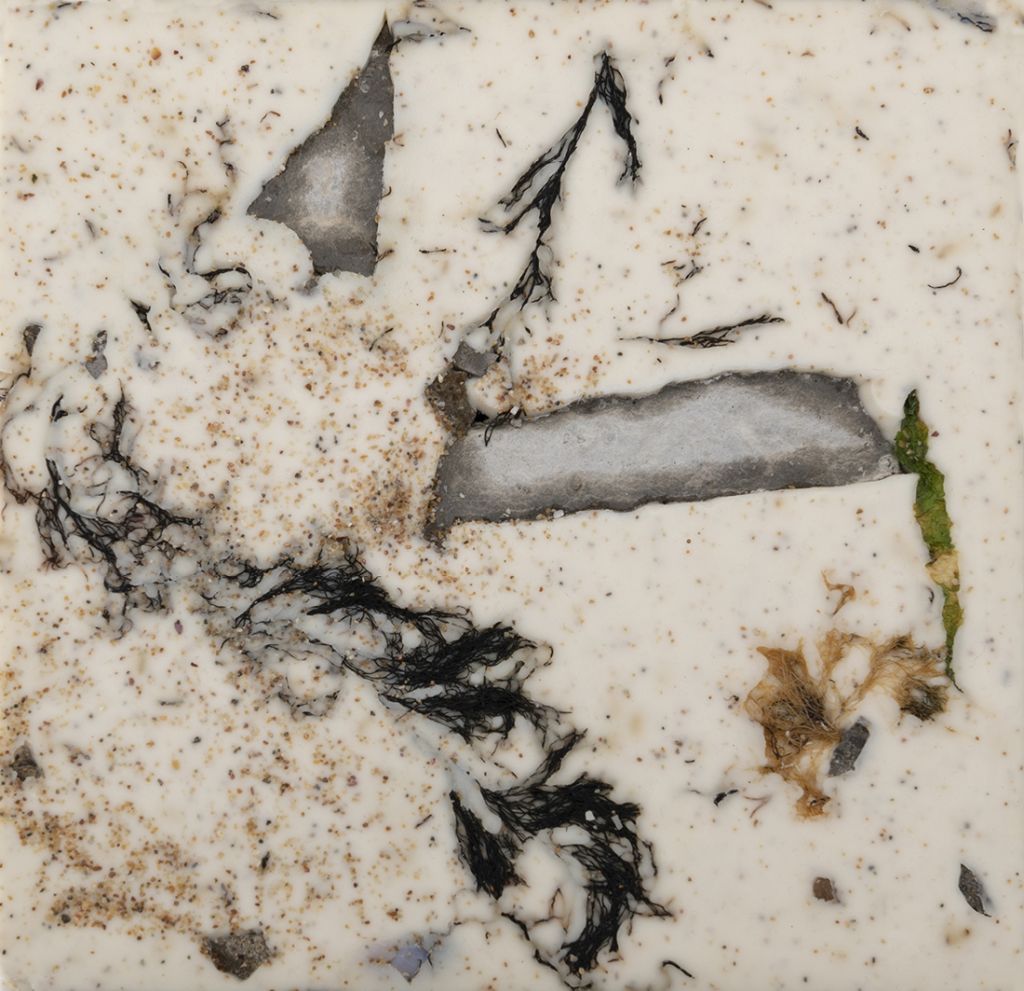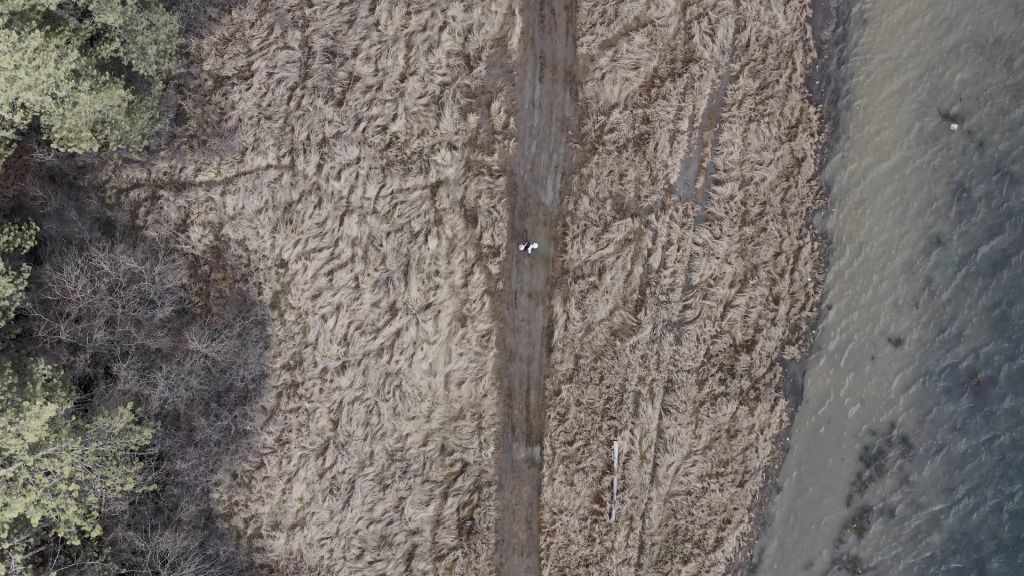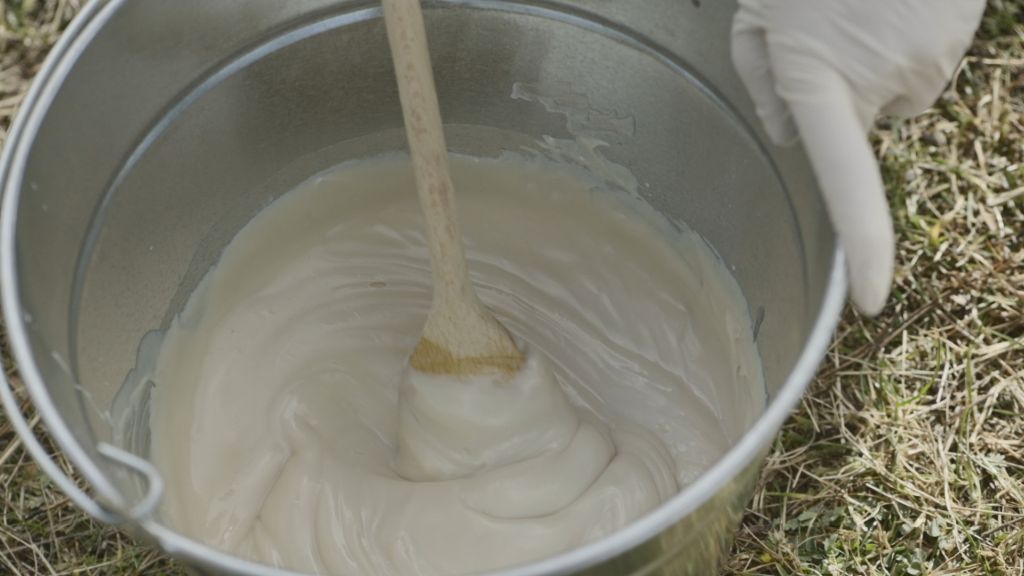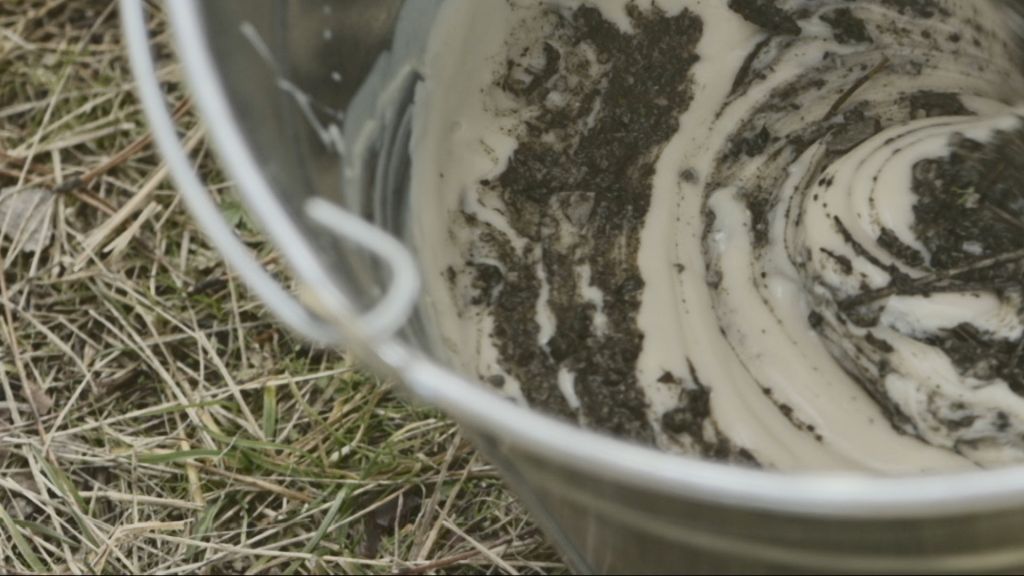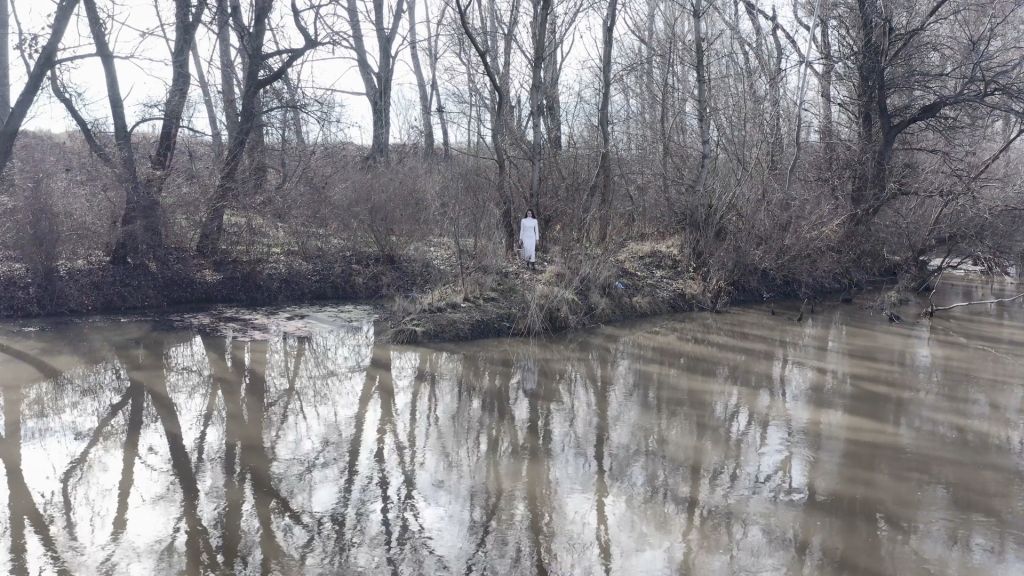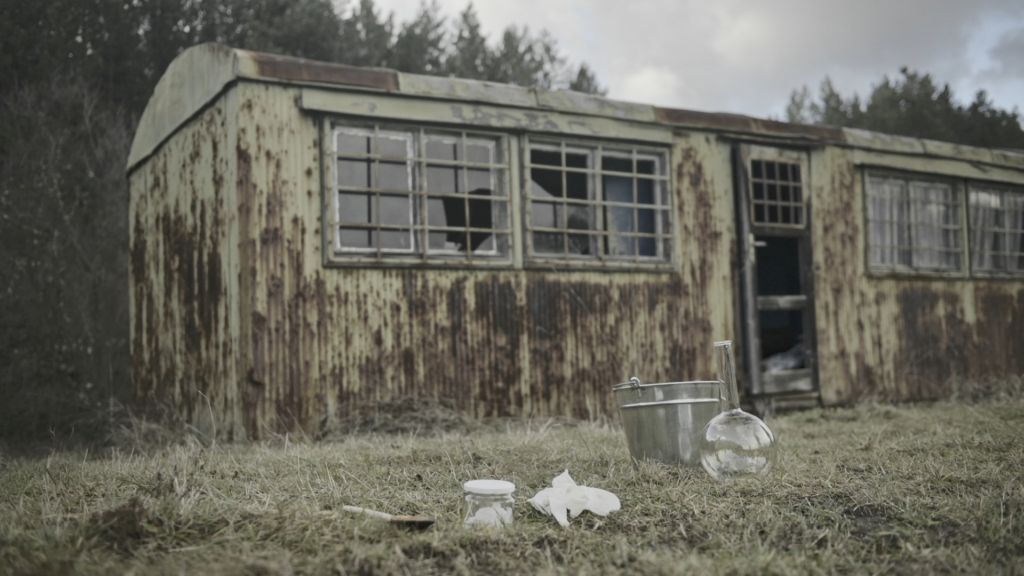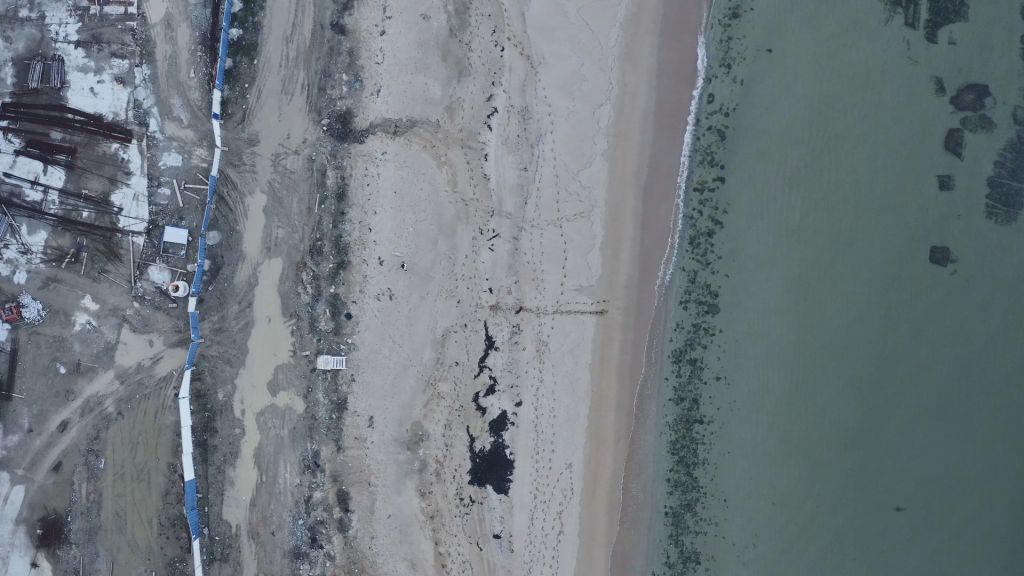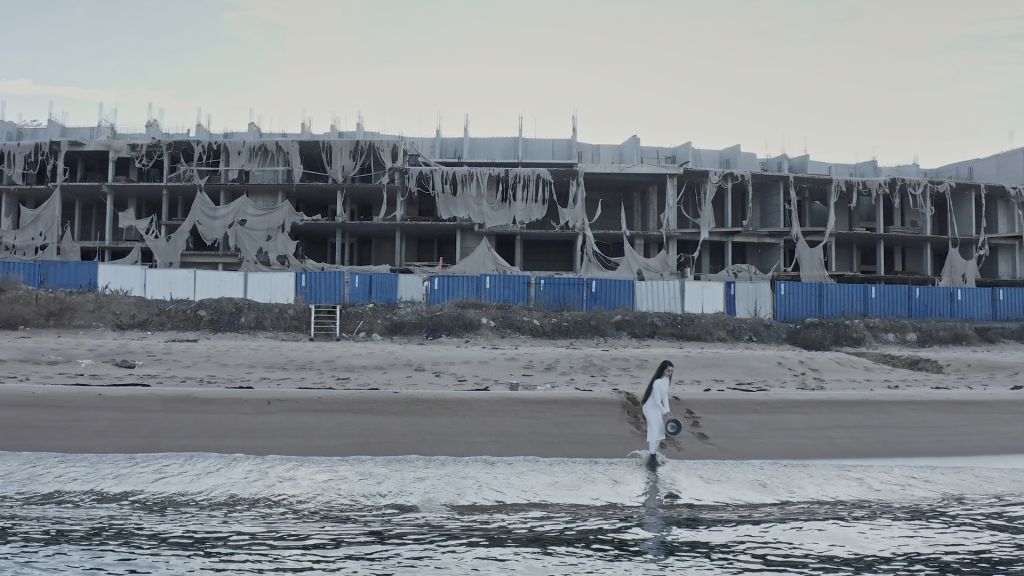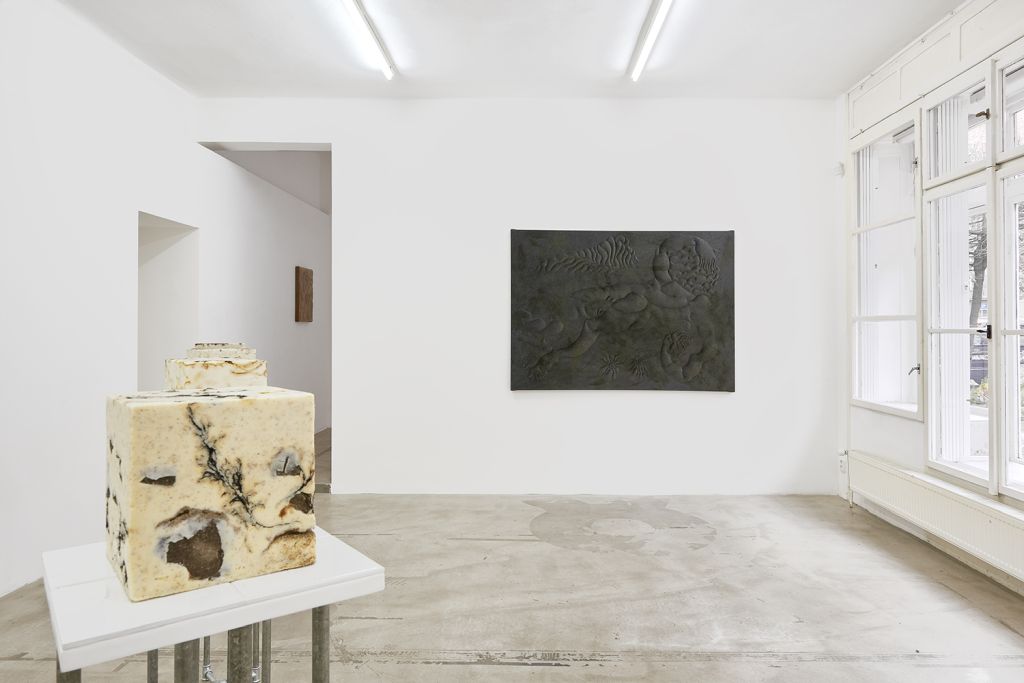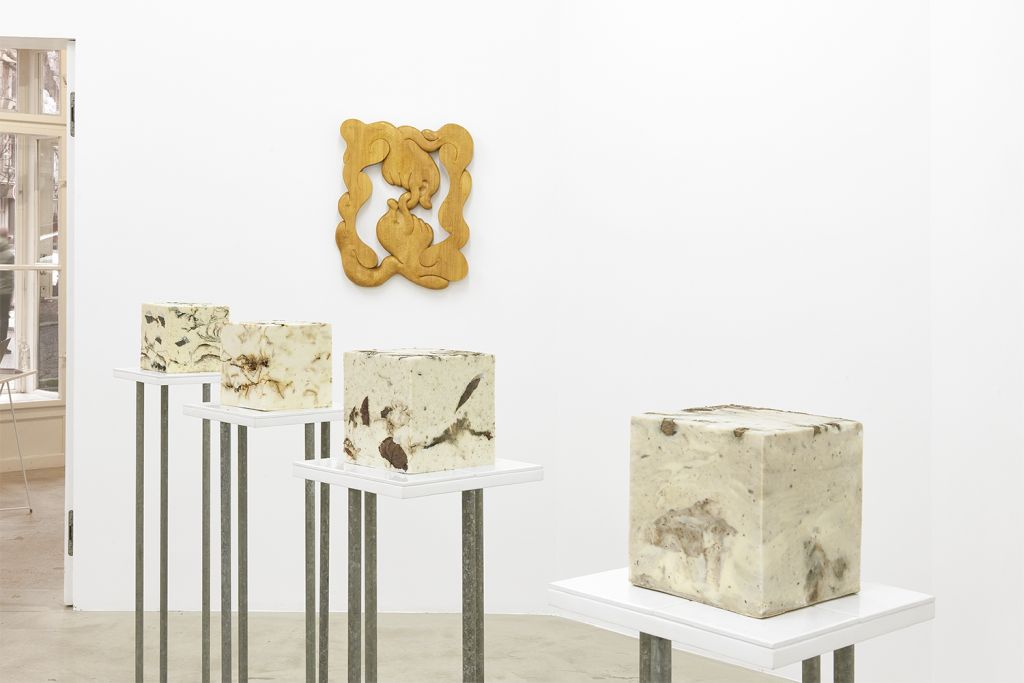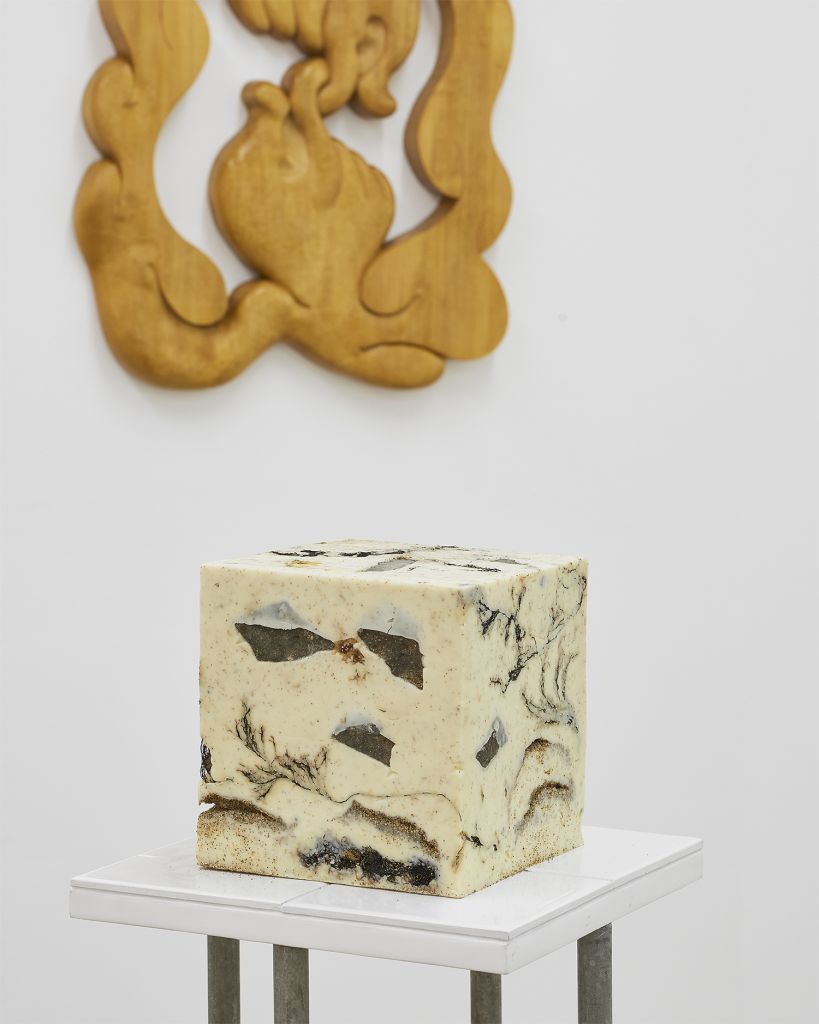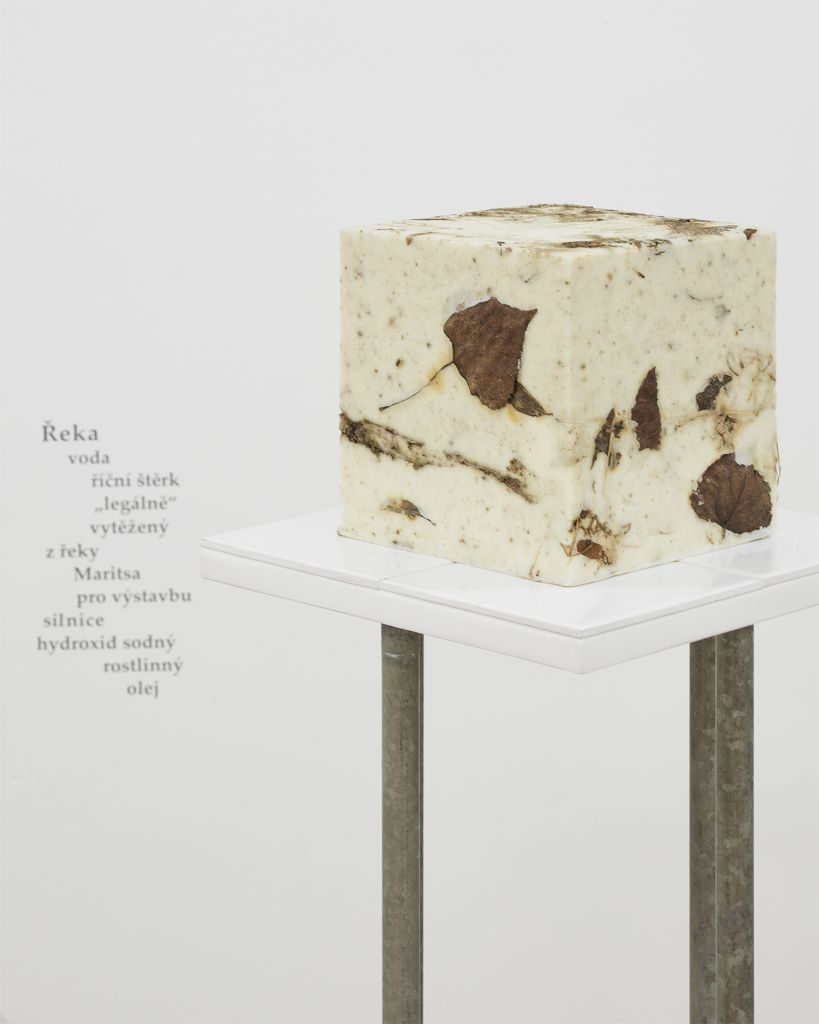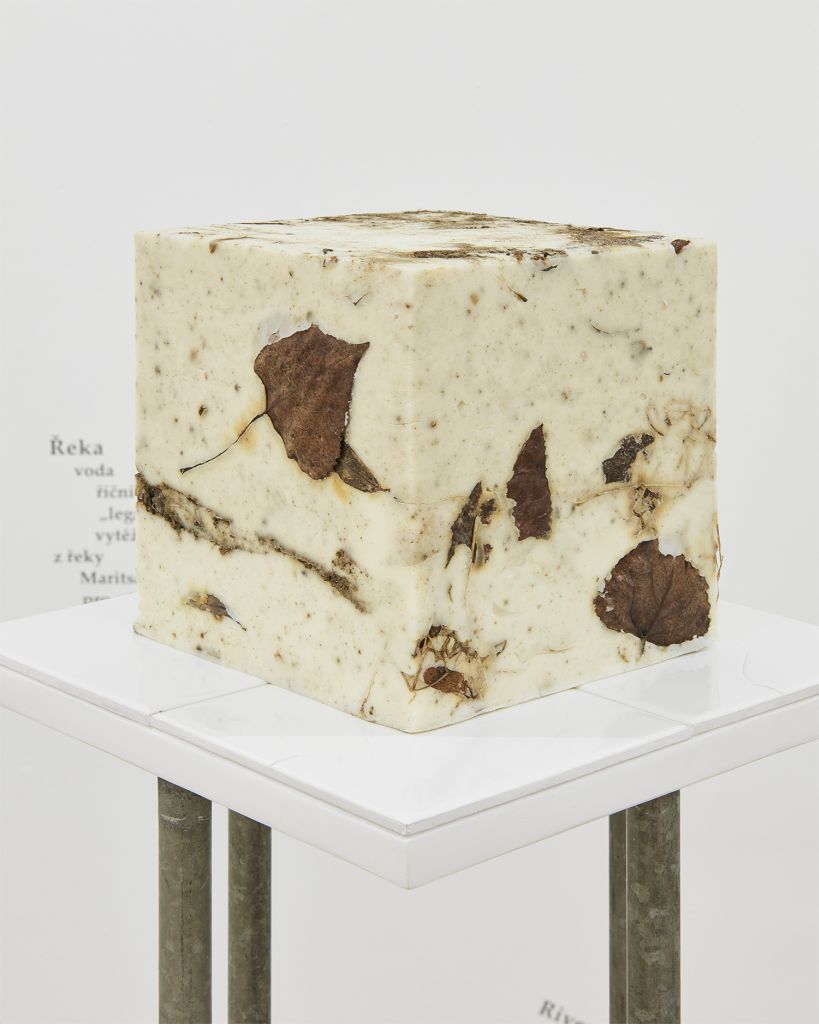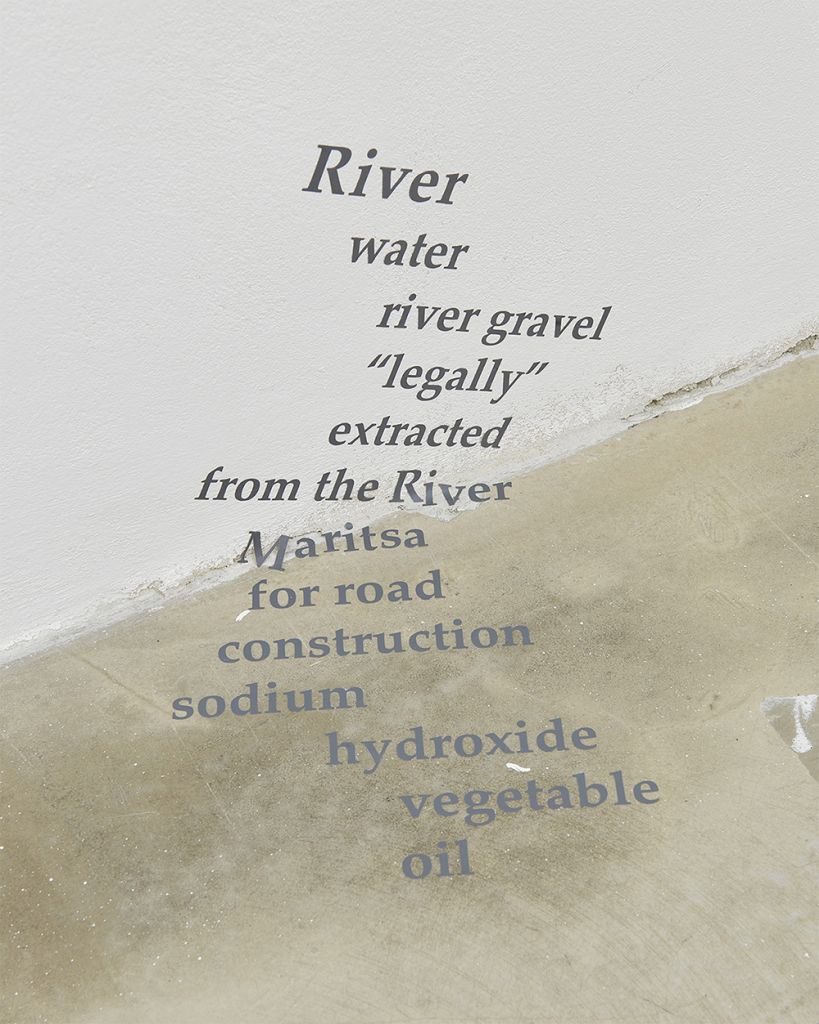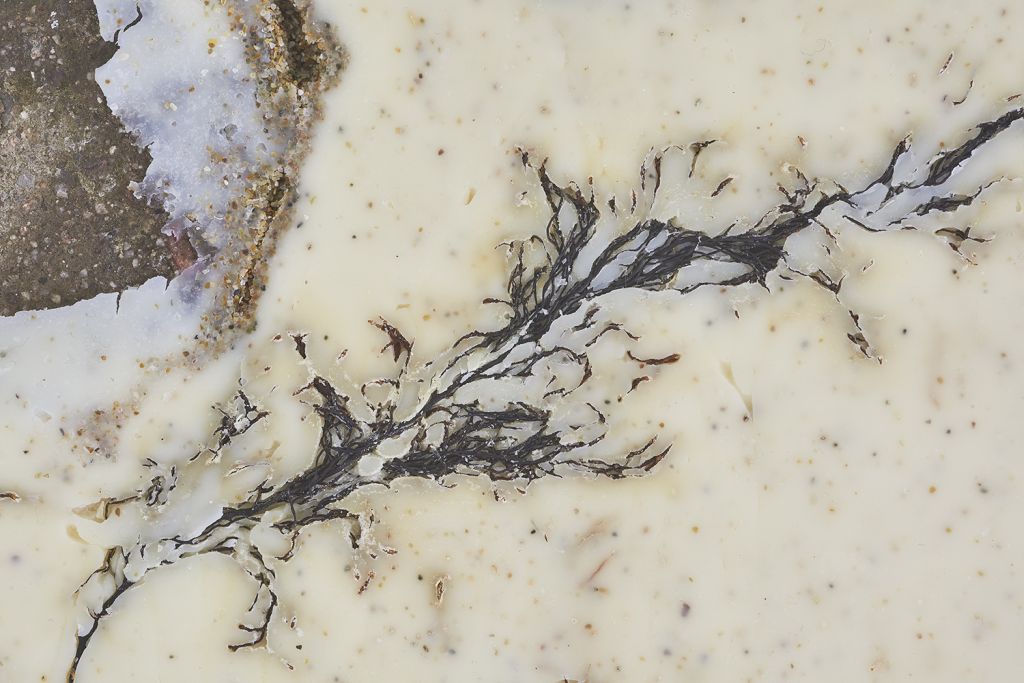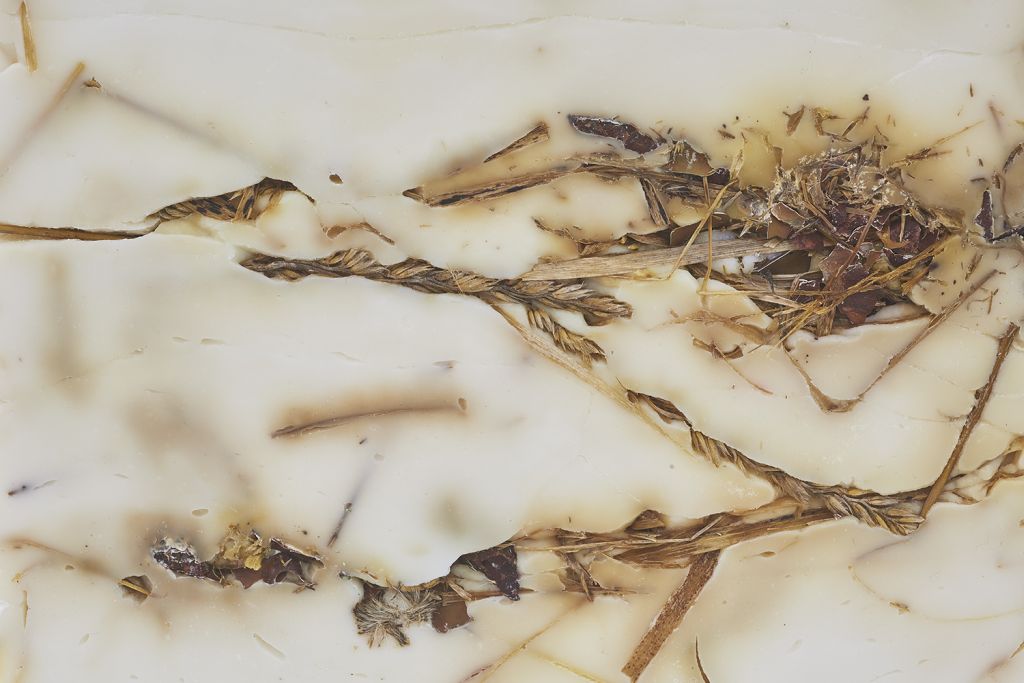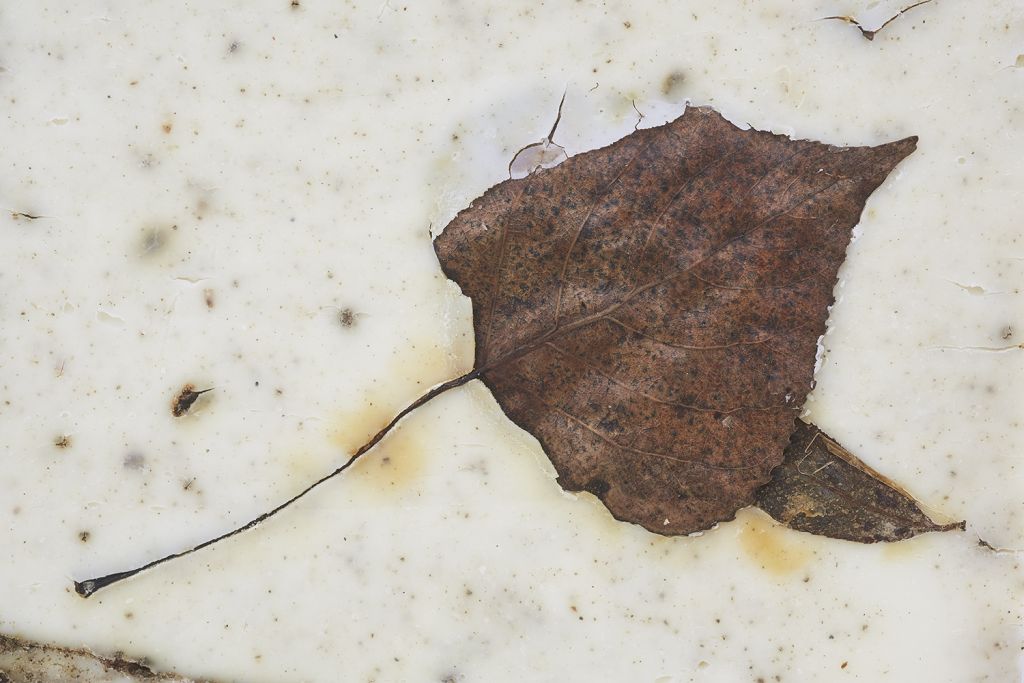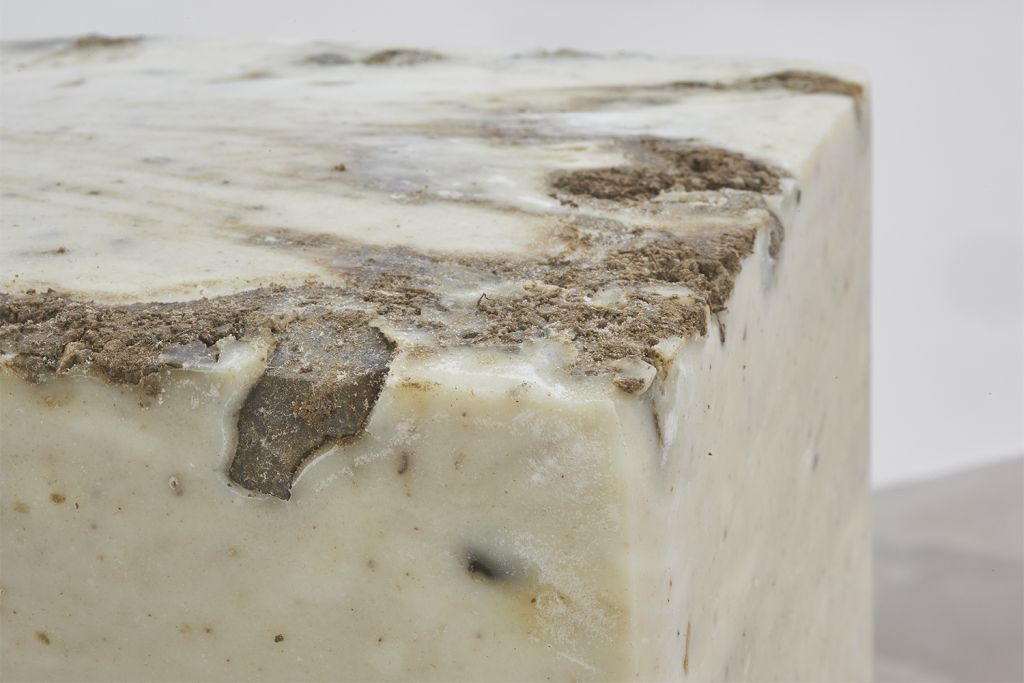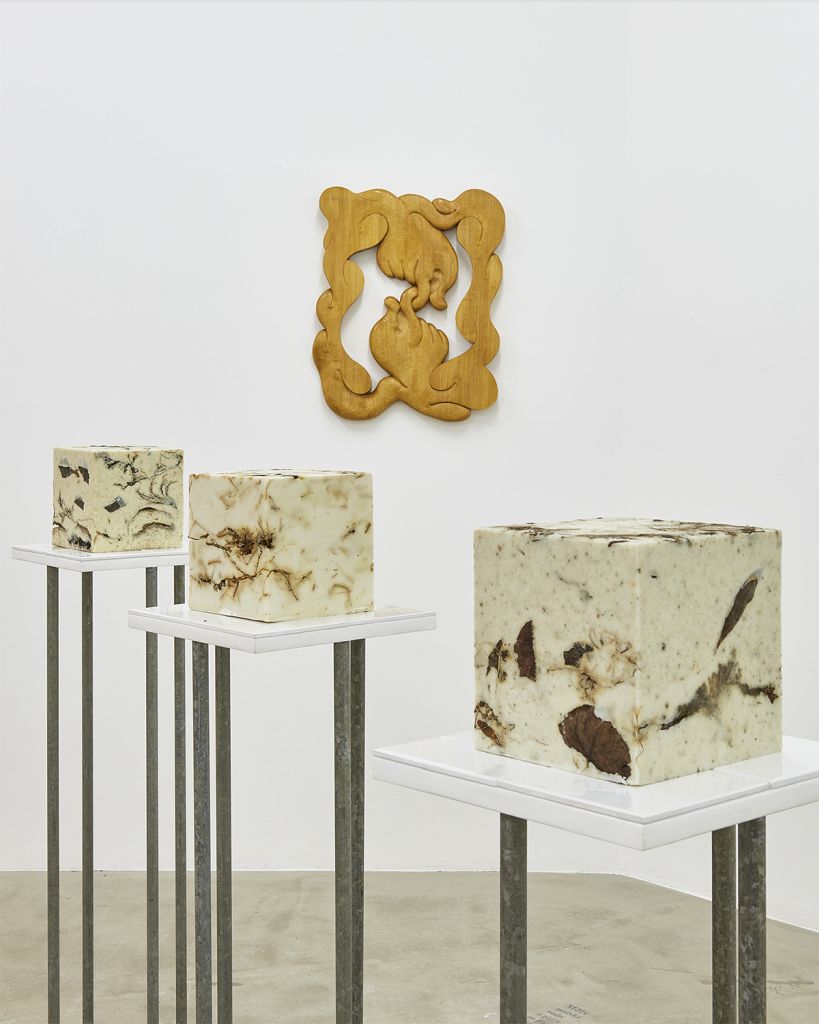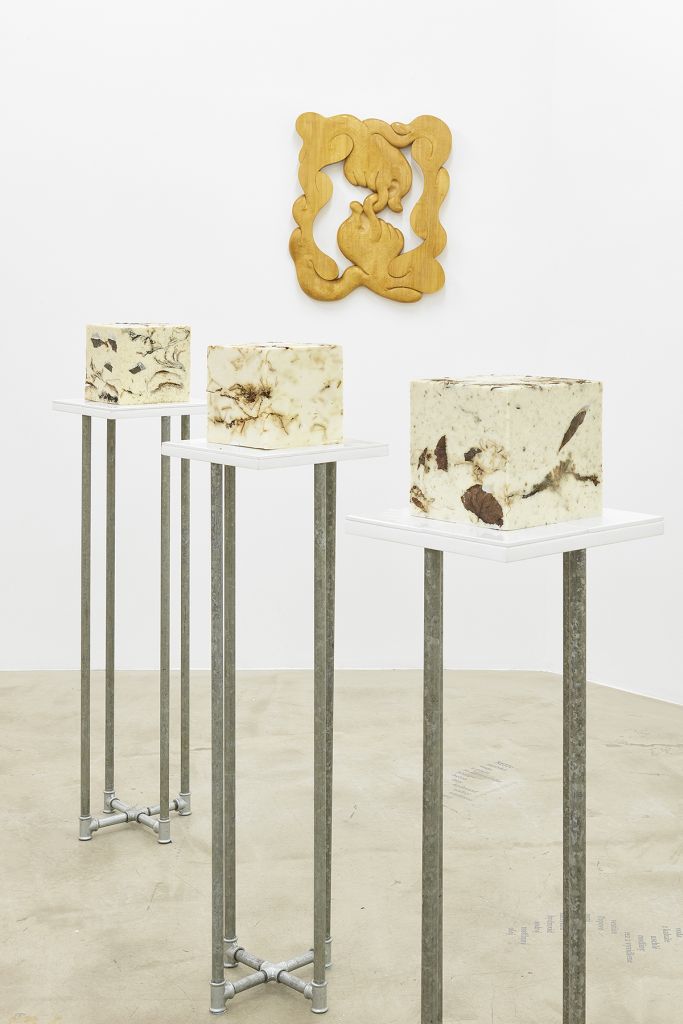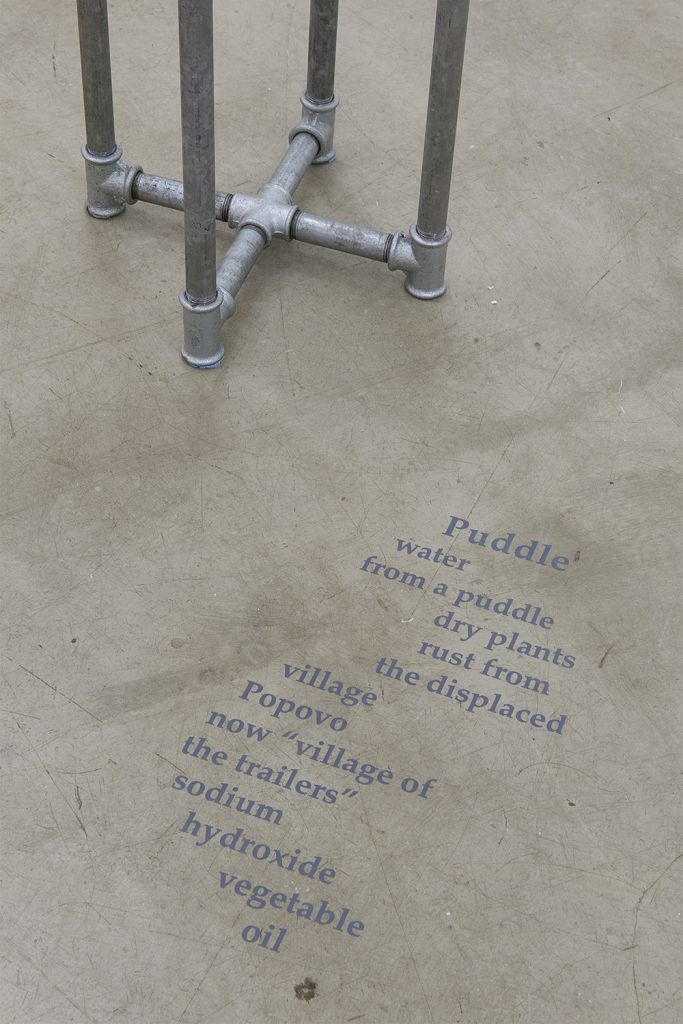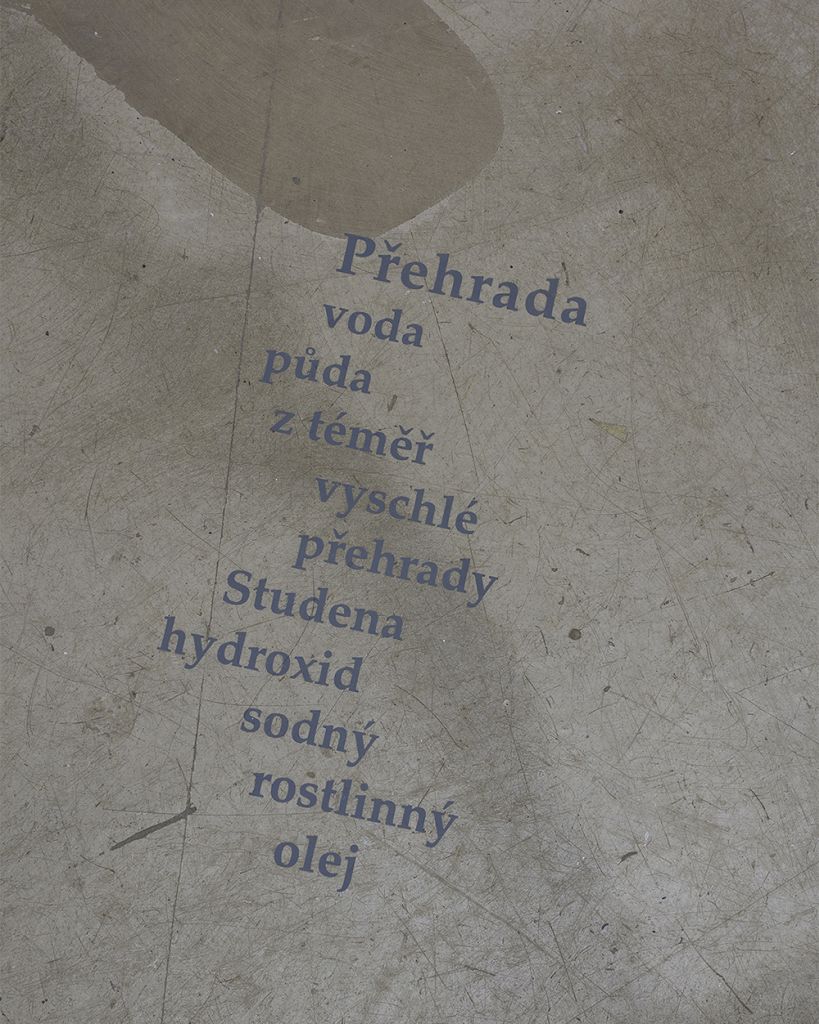Drought, 2021
An installation of four unique objects with dimensions: 126x30x30 cm
and video: 8:18 min., HD, stereo
camera: Peter Raijekov
second camera: Simeon Parashkevov
sound: Martin Taskov
~ Dam ~
video, metal water pipes, white tiles with factory defects, soap – sodium hydroxide, vegetable oil, ingredients taken from the environment – water and soil from the almost dry “Studena” dam
~ River ~
video, metal water pipes, white tiles with factory defects, soap – sodium hydroxide, vegetable oil, ingredients taken from the environment – water and river “gravel“ extracted from the Maritsa river used for the construction of roads and highways.
~ Puddle ~
video, metal water pipes, white tiles with factory defects, soap – sodium hydroxide, vegetable oil, ingredients taken from the environment – water from a puddle, dry plants and rust from the depopulated village – Popovo, today called the “village of the trailers”
~ Sea ~
video, metal water pipes, white tiles with factory defects, soap – sodium hydroxide, vegetable oil, ingredients taken from the environment – sea water from the Alepu beach construction site, concrete, algae, sand
2022 Fragment “Sea” participated in the exhibition “Over the past year”, Sofia Arsenal – Museum of Contemporary Art
2021 Part of the exhibition “Sedimentation”, Maria Nalbantova and Eliška Konečná, curated by Veronika Čechová, AVU Gallery, Prague, Czech Republic
2021 Solo exhibition, INTRO Gallery, Sofia, Bulgaria
The Project “Drought” consists of several objects and a video. It is a work that is focused on the question of how a protest turns into a ritual or how a ritual transforms into a protest. The work is made in four different locations next to water bodies, where drought is both a shadow of the past and an aspect of the present. In this project we see a lake, a river, a puddle in a depopulated village, and the sea. In the places shown in the video one can see the ritual of soap preparation, in which water is used from the place, oil, sodium hydroxide and some ingredients from the surrounding area. For example, the soap from the seaside consists of sand, algae and concrete, because of the huge illegal construction in that place at the seashore, which is a symbol of many more quite similar occasions. The ingredients such as – soil, water, sand, seaweed, river gravel, rust from a trailer, and concrete – have been extracted from those particular locations and become part of the soap installation.
Photos by Slava Savova, Gerogy Raijekov and František Svatoš
The Project “Drought” consists of several objects and a video. It is a work that is focused on the question of how a protest turns into a ritual or how a ritual transforms into a protest. The work is made in four different locations next to water bodies, where drought is both a shadow of the past and an aspect of the present. In this project we see a lake, a river, a puddle in a depopulated village, and the sea. In the places shown in the video one can see the ritual of soap preparation, in which water is used from the place, oil, sodium hydroxide and some ingredients from the surrounding area. For example, the soap from the seaside consists of sand, algae and concrete, because of the huge illegal construction in that place at the seashore, which is a symbol of many more quite similar occasions. The ingredients such as – soil, water, sand, seaweed, river gravel, rust from a trailer, and concrete – have been extracted from those particular locations and become part of the soap installation.
press:
Maria Nalbantova on the drought in man
Conversation between Radoslav Chichev and Maria Nalbantova @ "Alarm" - Bulgarian National Radio
Exhibition announce @ Vij Magazine
"The objects by Maria Nalbantova are a series of handmade soap blocks produced in the framework of the Drought project (2021). They echo references to the environmental crisis, equally as the social problems of present-day Bulgaria and, figuratively, the ruthless human behavior. Each soap cube contains a unique ingredient or ingredients taken from the environment where the artist executed it and related to the problematical handling of the given place. Once, it is a destroyed riverbed, brutally mined to build a semi-legal road. Another time, a seaside beach inhabited by a bizarre concrete barrier, erected without proper permission and, above all, without any reason (while the case is still the subject of litigation). It is also the arid landscape near a massive dam that, paradoxically, shut the supply of drinking and utility water for an entire year for the locals. And finally, a forcibly displaced village transformed into an odd cluster of caravans and temporary buildings due to a nonsensical zoning plan, which rules out the previous fully-fledged life.
All these places appear in the video accompanying the object installation in the gallery space. Visitors witness the dreary, violated, and extracted sites and watch the process of ritual creating of the soap artifacts that, in their layers, bear evidence of ever-expanding aridity. This aridity is not just a climatic one; it also expands because of the lack of moral values and consideration for the world around and the society that lives in it. The complement to the installation is a text listing the ingredients of the soap bars. It seeps through the gallery walls and floor and thus allows for identifying the origin of the individual objects." -
Veronika Čechová

